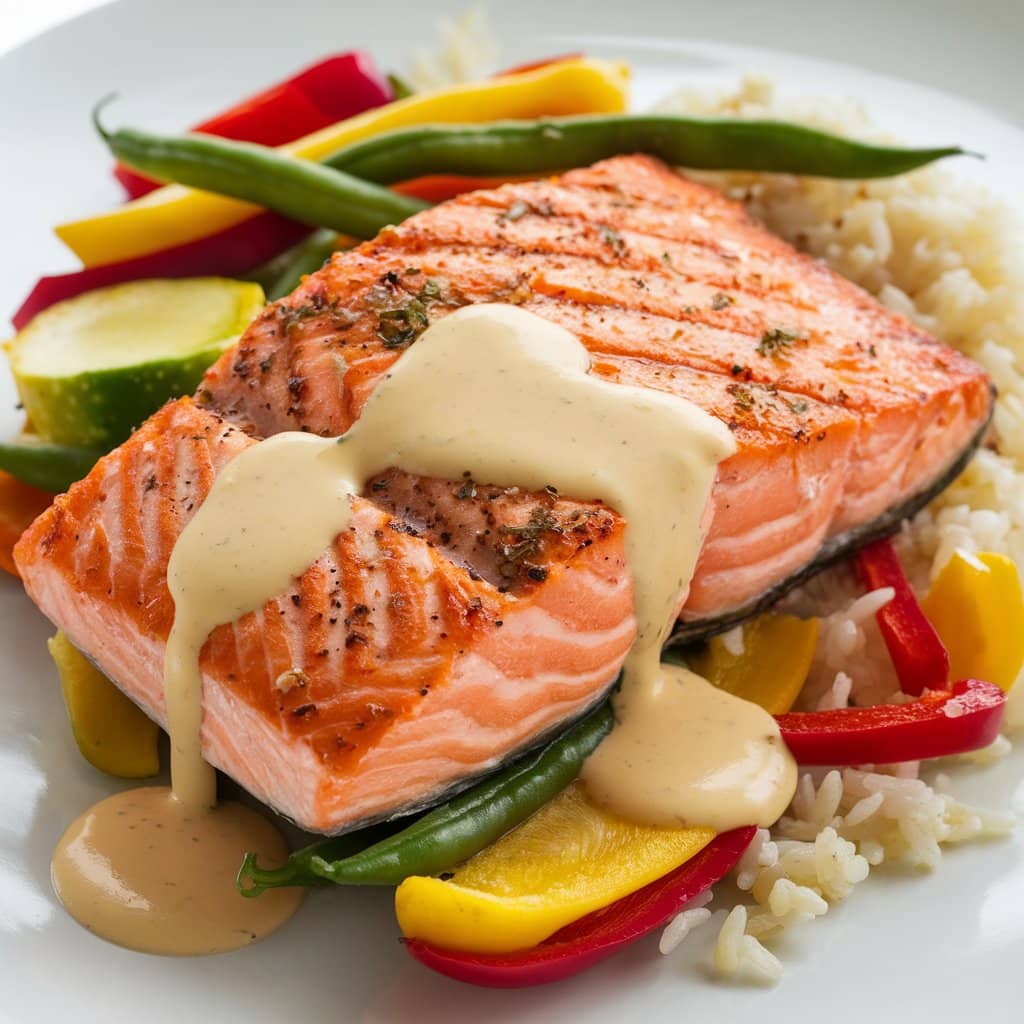Salmon fillet is one of the most popular and versatile types of fish for home cooks and professional chefs alike. Its tender, flavorful meat pairs well with a variety of seasonings and cooking methods. However, cooking salmon properly can be challenging if you’re unsure how to approach it. A perfectly cooked salmon fillet is moist, flaky, and packed with rich, savory flavors.
In this comprehensive guide, we’ll explore the best ways to cook a salmon fillet, from baking and pan-frying to grilling and poaching. We’ll also cover essential preparation tips, common mistakes to avoid, and expert techniques to ensure your salmon turns out perfect every time. Whether you’re new to cooking fish or looking to refine your technique, this article will equip you with everything you need to master cooking a delicious salmon fillet.
Table of contents
Best Methods for Cooking Salmon Fillet
Learning how should a salmon fillet be cooked involves mastering various techniques like baking, pan-frying, and grilling. Each method brings out unique flavors while preserving the fish’s natural moisture and tenderness. If you’re searching for the best way to cook salmon fillet, the following methods are reliable options.
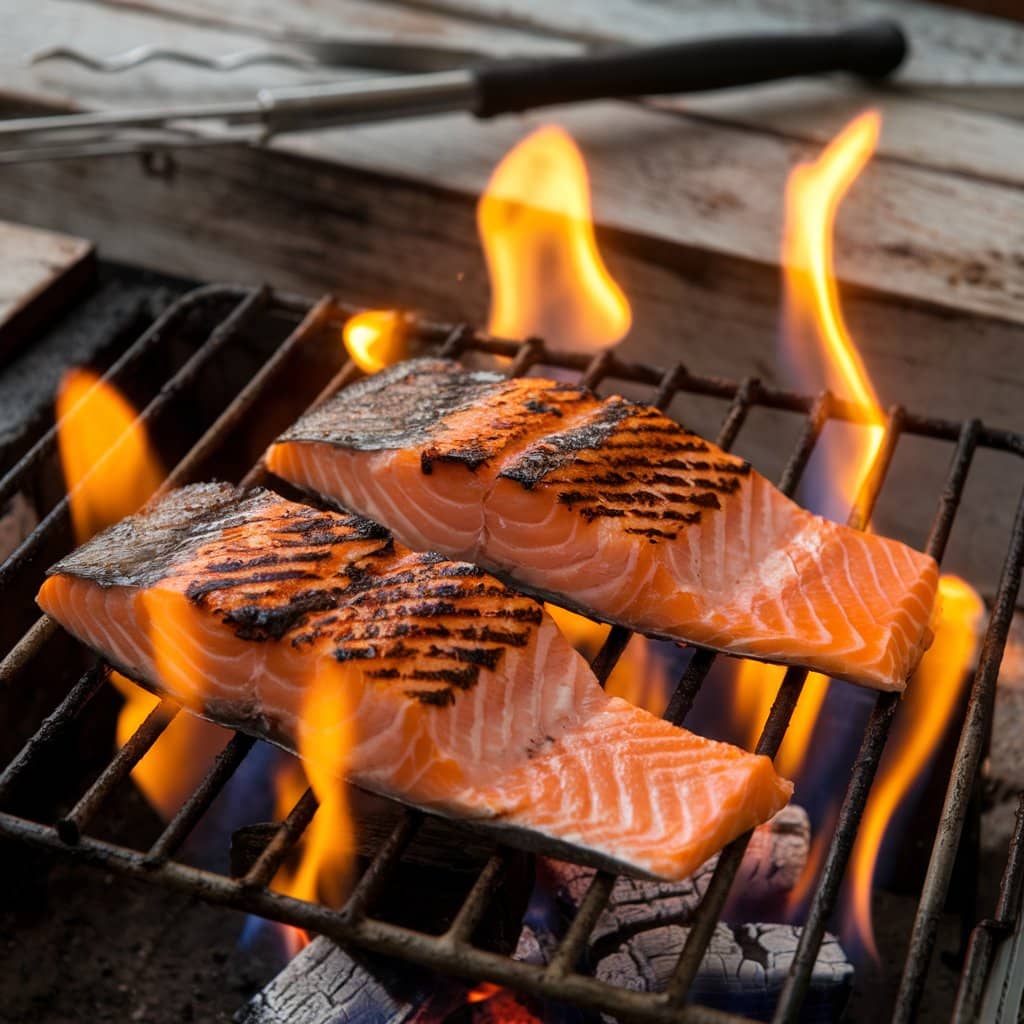
Baking Salmon Fillet
Baking is one of the easiest and healthiest ways to cook salmon. It’s also an ideal method when considering how to prepare salmon fillet with minimal effort. Baking involves using dry heat, which preserves the fish’s natural juices while enhancing its flavor.
How to Bake Salmon:
- Preheat the oven to 400°F (200°C).
- Season the salmon with salt, pepper, and herbs.
- Place the fillet on a baking sheet lined with parchment paper.
- Bake for 12-15 minutes or until the internal temperature reaches 145°F (63°C).
Pro Tip: Add a splash of lemon juice or white wine to keep the salmon moist during baking. If you’re aiming for a perfectly cooked salmon fillet, ensure you don’t overbake.
Pan-Frying Salmon Fillet
Pan-frying creates a crispy skin while keeping the inside tender and juicy. This method is a fantastic option when deciding how should a salmon fillet be cooked quickly.
How to Pan-Fry Salmon:
- Heat a non-stick skillet over medium-high heat.
- Add a tablespoon of olive oil or butter.
- Season the salmon fillet and place it skin-side down.
- Cook for 4-5 minutes on the skin side, then flip and cook for another 2-3 minutes.
Pro Tip: Avoid moving the salmon while it cooks to achieve a perfect sear. If you’re exploring cooking salmon fillet tips, focus on maintaining a consistent heat for even cooking.
Grilling Salmon Fillet
Grilling is a summer favorite, imparting a smoky, charred flavor to salmon fillets. It’s often recommended as the best way to cook salmon fillet for outdoor gatherings.
How to Grill Salmon:
- Preheat the grill to medium-high heat.
- Brush the salmon with oil and season it.
- Place the salmon skin-side down on the grill.
- Cook for 6-8 minutes, then flip for an additional 2-3 minutes.
Pro Tip: Use a fish grilling basket to prevent sticking and simplify flipping. If you’re looking for a salmon fillet cooking guide, grilling is a versatile technique worth mastering.
Poaching Salmon Fillet
Poaching is a gentle cooking method that keeps the fish tender and moist while also avoiding the need for extra oil or fat. This technique is an excellent choice for those learning how to prepare salmon fillet in a light and healthy way.
How to Poach Salmon:
- Fill a deep pan with water, broth, or white wine.
- Add herbs, garlic, and lemon slices for flavor.
- Bring the liquid to a simmer (not boiling).
- Gently place the salmon in the liquid and cook for 8-10 minutes.
Pro Tip: Avoid letting the water boil, which can cause the fish to break apart. For a perfectly cooked salmon fillet, keep a close eye on the poaching time.
Broiling Salmon Fillet
Broiling uses high heat from above, which not only gives the salmon a caramelized, crispy exterior but also cooks it quickly and evenly. This method often features in any salmon fillet cooking guide because it’s efficient and yields delicious results.
How to Broil Salmon:
- Preheat the oven’s broiler setting.
- Place salmon fillets on a baking sheet lined with foil.
- Brush with olive oil and season as desired.
- Broil for 6-8 minutes, keeping a close eye to prevent burning.
Pro Tip: Use a glaze or marinade to enhance the caramelized finish. If you’re still wondering how should a salmon fillet be cooked to achieve a perfect crust, broiling is an excellent choice.
Preparation Before Cooking Salmon Fillet
Before diving into how should a salmon fillet be cooked, it’s crucial to prepare the fish properly. Proper preparation not only enhances the flavor but also ensures the cooking process is smooth and successful. This includes selecting the freshest salmon, seasoning it effectively, and using the right tools for the job.
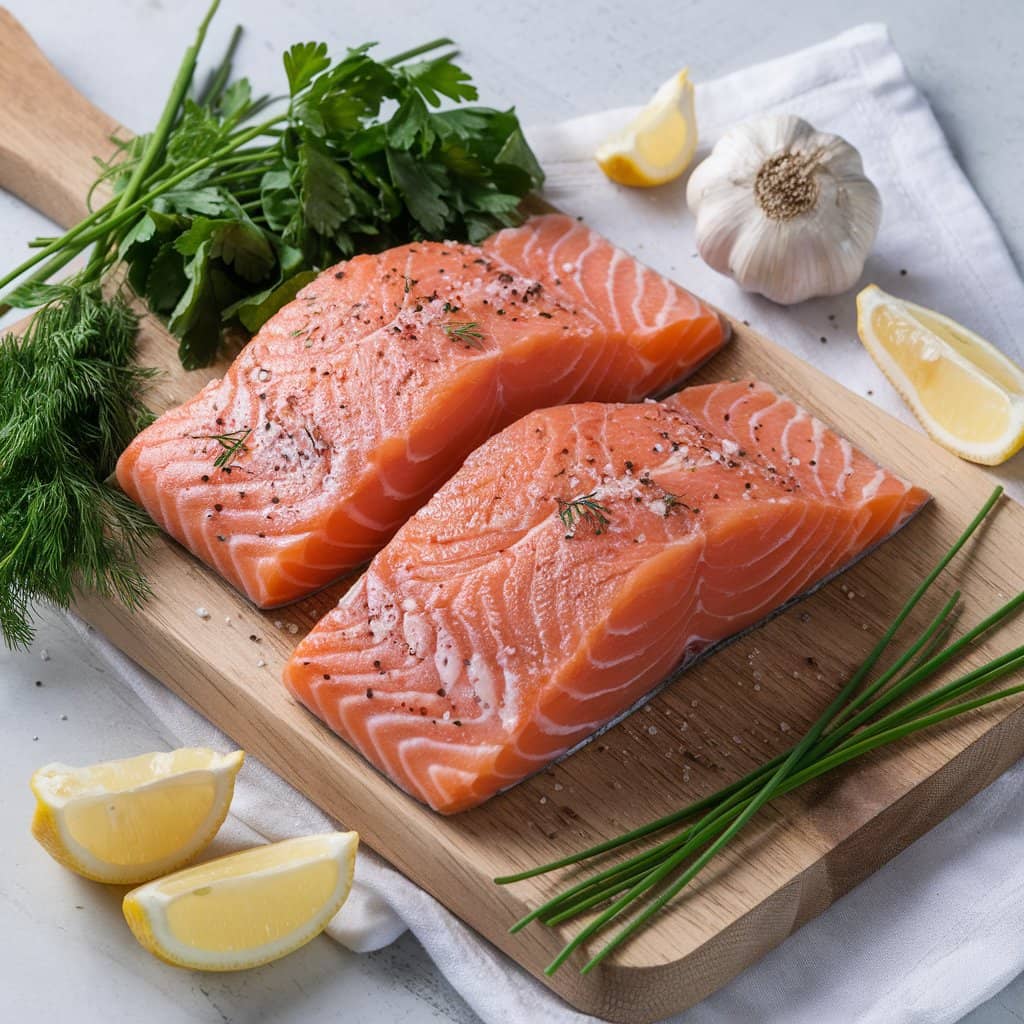
Selecting Fresh Salmon Fillet
Choosing high-quality salmon is the first step to mastering how to prepare salmon fillet. It guarantees a better cooking experience and a more flavorful dish.
Tips for Choosing Fresh Salmon:
- Appearance: Select salmon with bright, vibrant pink or orange flesh. Avoid dull or discolored fish.
- Smell: Fresh salmon should have a mild, oceanic scent. A strong fishy odor may indicate that the fish is no longer fresh.
- Texture: The flesh should feel firm and moist, not slimy or dry. Press it gently; it should spring back.
- Packaging: When buying pre-packaged salmon, ensure it’s well-sealed, with no liquid leakage or discoloration.
Pro Tip: If possible, purchase wild-caught salmon for its robust flavor and better nutritional profile.
Preparing Salmon Fillet
Preparation is key to ensuring a perfectly cooked salmon fillet. Follow these steps to get the fish ready for cooking:
Rinse and Pat Dry
- Rinse the fillet under cold running water to remove any impurities.
- Pat it dry thoroughly with paper towels. A dry surface allows seasonings to stick better and ensures even cooking.
Remove Bones
- Use kitchen tweezers to remove any visible pin bones along the fillet. Running your fingers over the flesh will help locate them.
Trim Skin (Optional)
- If you prefer skinless salmon, carefully trim the skin using a sharp knife. However, leaving the skin on helps retain moisture during cooking and creates a deliciously crispy texture if pan-fried or grilled.
Seasoning Salmon Fillet
Seasoning is essential because it boosts the natural flavors of salmon and complements its rich taste. Here are some popular techniques to elevate your dish:
Basic Seasoning
- A simple combination of salt, pepper, and olive oil enhances the salmon’s natural flavor.
Herb and Citrus Blend
- Fresh dill, parsley, and lemon zest create a light, refreshing flavor profile.
Spicy Rub
- A mix of paprika, cayenne pepper, and garlic powder adds a bold, smoky kick.
Marinade
- Combine soy sauce, honey, garlic, and ginger for a savory-sweet twist. Let the salmon marinate for 15–30 minutes before cooking.
Pro Tip: Apply seasonings just before cooking to prevent drawing out moisture from the fish.
Tools Needed for Cooking Salmon
The right tools make cooking salmon a seamless process and help achieve professional results.
Essential Tools:
- Non-Stick Skillet: Perfect for pan-frying or searing salmon without sticking.
- Baking Sheet and Parchment Paper: Ideal for baking, making cleanup quick and easy.
- Fish Spatula: Specifically designed to flip delicate salmon fillets without breaking them.
- Meat Thermometer: Ensures the salmon reaches the correct internal temperature (145°F or 63°C).
- Tongs: Handy for flipping salmon when grilling or broiling, ensuring even cooking.
Recap: Preparing your salmon properly is a crucial step in learning how should a salmon fillet be cooked. With fresh, high-quality fish, the right seasoning, and essential tools, you’re well on your way to creating a flavorful and perfectly cooked dish.
Cooking Times and Temperatures for Salmon Fillet
Understanding how should a salmon fillet be cooked starts with mastering the right cooking temperature and timing. Cooking salmon to perfection requires precision, as overcooking can dry out the fish, while undercooking can leave it unsafe to eat. Here’s a complete guide to ensure your salmon fillet turns out moist, tender, and flavorful every time.
Ideal Internal Temperature for Salmon
The USDA recommends cooking salmon to an internal temperature of 145°F (63°C). This temperature ensures the fish is fully cooked and safe to eat. However, many professional chefs suggest removing the salmon from the heat at 135°F to 140°F (57°C to 60°C). Allowing residual heat to bring it to the final temperature prevents overcooking and keeps the salmon juicy.
How to Check the Temperature:
- Use a meat thermometer and insert it into the thickest part of the salmon fillet.
- Avoid touching the pan, skin, or bones to ensure an accurate reading.
Pro Tip: Always rest the salmon for 3-5 minutes after cooking to let the juices redistribute evenly.
Cooking Times by Method
The time it takes to cook salmon depends on its thickness and the cooking method. Here’s a general guide:
1. Baking (400°F / 200°C):
- 1-inch thick fillet: Bake for 12-15 minutes.
- Thicker fillet: Bake for 15-20 minutes.
2. Pan-Frying (Medium-High Heat):
- Skin-on fillet: Cook for 4-5 minutes on the skin side and 2-3 minutes on the other side.
3. Grilling (Medium-High Heat):
- Direct heat: Grill for 6-8 minutes skin-side down, then flip and cook for an additional 2-3 minutes.
4. Poaching (Simmering Liquid):
- Poach for 8-10 minutes, depending on the thickness of the fillet.
5. Broiling (High Heat):
- Position the salmon 4-6 inches from the broiler. Cook for 6-8 minutes or until golden brown.
Pro Tip: Cooking salmon at high heat methods like broiling or grilling requires constant monitoring to prevent overcooking.
Factors That Affect Cooking Time
Cooking time isn’t a one-size-fits-all rule. Here are some variables to consider when determining how long to cook salmon:
- Thickness: Thicker fillets take longer to cook than thinner cuts. Always account for size and adjust cooking times accordingly.
- Bone-In vs. Boneless: Bone-in salmon fillets require more time to cook through than boneless ones.
- Cooking Method: Quick methods like grilling or poaching cook salmon faster than baking.
- Oven Type: Convection ovens, which circulate heat more evenly, may reduce cooking time compared to conventional ovens.
Visual Cues for Doneness
Even without a thermometer, you can determine if your salmon is properly cooked by observing these signs:
- Opaque Flesh: Salmon changes from a translucent color to opaque pink when fully cooked.
- Flaky Texture: Use a fork to gently press the fish. If it flakes easily, it’s done.
- Firm Yet Moist: The flesh should feel firm to the touch but retain its moisture.
Pro Tip: If unsure, it’s better to slightly undercook salmon and allow residual heat to finish cooking it during the resting period.
Common Mistakes to Avoid When Cooking Salmon Fillet
When learning how should a salmon fillet be cooked, avoiding common mistakes is key to achieving a perfectly cooked, flavorful dish. From overcooking to improper preparation, these pitfalls can easily ruin your salmon. Here’s a breakdown of the most frequent mistakes and how to avoid them.
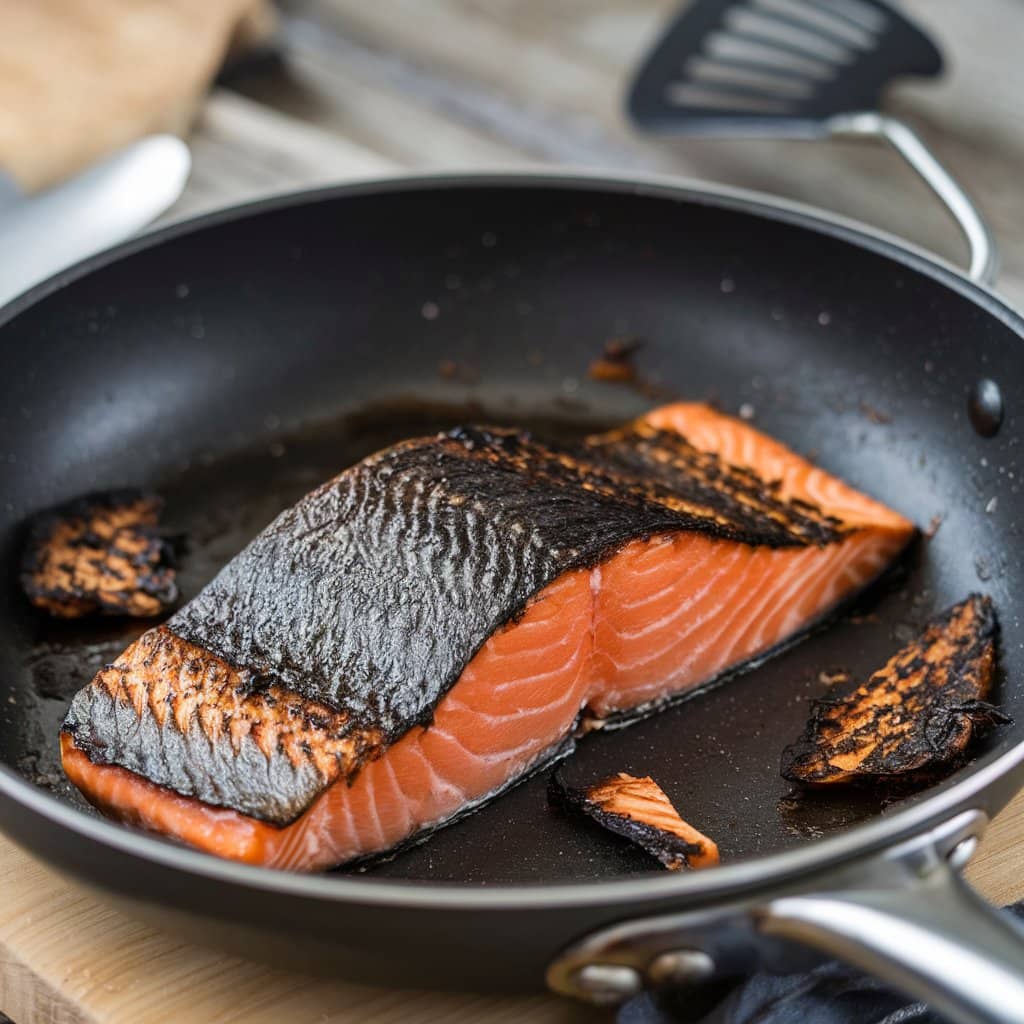
Overcooking the Salmon
Mistake:
Overcooking salmon is a common error that leaves the fish dry, tough, and less flavorful.
Solution:
- Use a meat thermometer to monitor the salmon’s internal temperature. Remove it from the heat at 135°F to 140°F (57°C to 60°C) and allow residual heat to bring it to the USDA-recommended 145°F (63°C).
- Stop cooking when the salmon is still slightly translucent in the center, as it will continue cooking during the resting period.
Cooking Salmon Straight from the Fridge
Mistake:
Placing cold salmon directly into a hot pan or oven causes uneven cooking, with the outside overcooked and the inside underdone.
Solution:
- Allow the salmon to sit at room temperature for 15-20 minutes before cooking. This ensures even cooking and better texture throughout the fillet.
Not Patting the Salmon Dry
Mistake:
Skipping this step results in steamed salmon instead of a crispy, golden-brown crust.
Solution:
- Thoroughly pat the salmon dry with paper towels before seasoning and cooking. A dry surface helps achieve better browning and caramelization, especially when pan-frying or grilling.
Underseasoning the Salmon
Mistake:
Failing to season the salmon generously leads to a bland dish that doesn’t highlight the fish’s natural flavors.
Solution:
- Use salt, pepper, and herbs liberally to enhance the taste. Add spices or marinades for deeper flavor. Consider blends like lemon zest with dill or a spicy rub with paprika and garlic.
Skipping Skin-On Cooking (If Desired)
Mistake:
Removing the skin before cooking can cause the fish to lose moisture and become dry.
Solution:
- Cook the salmon with the skin on to lock in moisture and protect the flesh from direct heat. If you prefer skinless salmon, remove the skin after cooking for the best texture.
Using the Wrong Pan or Heat Level
Mistake:
Starting with a cold pan or using too high a heat can cause the salmon to stick or cook unevenly.
Solution:
- Preheat a non-stick or stainless-steel pan over medium-high heat before adding the salmon. Use oil or butter to create a barrier that prevents sticking and promotes even cooking.
Flipping the Salmon Too Soon
Mistake:
Turning the salmon too early can cause the fillet to break apart or stick to the pan.
Solution:
- Allow the salmon to cook skin-side down for 75% of the time before flipping it. The skin serves as a barrier, keeping the fish intact and maintaining its structure.
Not Letting the Salmon Rest
Mistake:
Cutting into the salmon immediately after cooking allows the juices to run out, resulting in dry, flavorless fish.
Solution:
- Let the salmon rest for 3-5 minutes after removing it from the heat. This redistributes the juices, ensuring moist and tender fish.
Expert Tips for Cooking Salmon Fillet to Perfection
Achieving restaurant-quality salmon at home is easier when you follow expert tips. Professional chefs rely on simple yet effective techniques to enhance the fish’s flavor, texture, and appearance. Here’s how to elevate your salmon-cooking game:
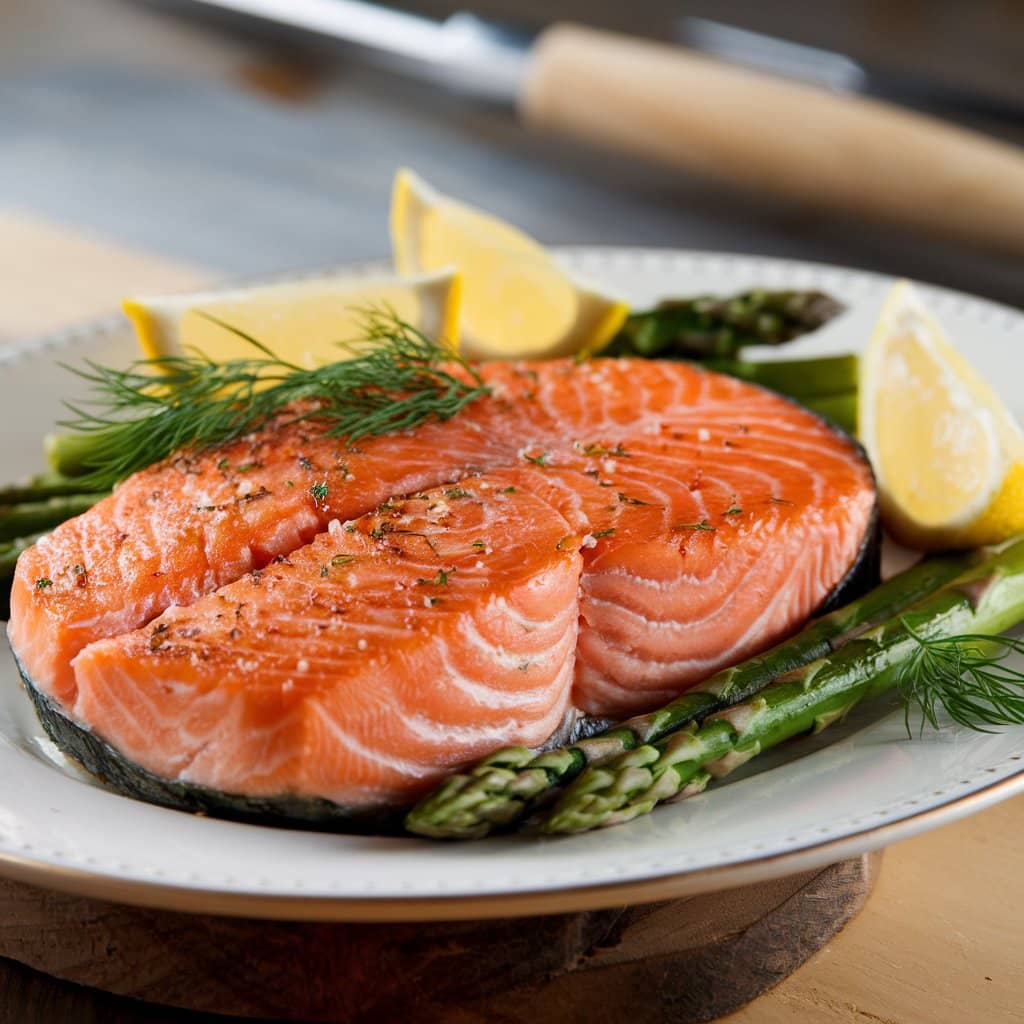
Use the Right Type of Salmon
Not all salmon types are the same. Each has unique flavors and textures:
- Atlantic Salmon: Mild flavor, rich in fat, and great for most cooking methods.
- Sockeye Salmon: Deep red, bold flavor, perfect for grilling and broiling.
- King Salmon (Chinook): The fattiest and most flavorful, ideal for luxurious recipes.
- Coho Salmon: Mild taste with a firm texture, great for pan-frying and baking.
Pro Tip: Choose wild-caught salmon for a more robust taste, while farmed salmon offers consistent fat content and availability.
Enhance Flavor with Marinades and Rubs
Adding flavor starts with the right marinade or seasoning rub.
- Simple Marinade: Combine olive oil, lemon juice, garlic, and herbs like dill or rosemary. Marinate the salmon for 15-30 minutes before cooking.
- Dry Rub: Mix paprika, garlic powder, onion powder, and black pepper for a smoky, spiced crust.
Pro Tip: Avoid over-marinating, as the acidic components can “cook” the salmon like ceviche.
Try Different Cooking Techniques
Vary your cooking methods in order to explore different textures and flavors; for example, try baking for a tender result or grilling for a smoky, charred finish.
- Sous Vide: Cook salmon at a precise temperature for perfect doneness every time.
- Cedar Plank Grilling: Imparts a smoky, earthy flavor while keeping the fish moist.
- En Papillote (Parchment Packet): Seals in flavors and moisture for a tender, flavorful result.
Finish with a Sauce or Glaze
To enhance the flavor of your salmon dish, consider adding a sauce or glaze after cooking; for instance, a lemon-butter sauce adds richness, while a honey-mustard glaze creates a sweet and tangy finish.
- Honey-Mustard Glaze: Sweet and tangy for a caramelized finish.
- Lemon Butter Sauce: A classic, simple sauce that enhances the fish’s richness.
- Teriyaki Glaze: For a sweet and savory Asian-inspired dish.
Plating and Presentation Tips
To create an inviting presentation, make your salmon dish visually appealing by adding colorful vegetables, fresh herbs, and even a drizzle of sauce for a polished look.
- Use Contrasting Colors: Pair salmon with bright vegetables like asparagus or cherry tomatoes.
- Add Fresh Garnishes: Herbs like parsley or dill enhance both appearance and flavor.
- Create Layers: Stack ingredients for a modern, professional look.
Storing and Reheating Cooked Salmon
To keep your salmon fresh, proper storage is essential, as it helps maintain quality and extends its shelf life for future meals.
- Refrigeration: Store cooked salmon in an airtight container in the fridge for up to 3 days.
- Freezing: Wrap tightly in plastic wrap and aluminum foil, then freeze for up to 3 months.
- Reheating: Use low heat in the oven or a skillet to retain moisture and avoid drying out the fish.
Frequently Asked Questions (FAQs)
1. What Is the Best Way to Cook Salmon for Beginners?
Baking is the easiest method because it requires minimal attention while still yielding consistently good results. It’s perfect for beginners as it’s straightforward and forgiving.
2. How Do You Know When Salmon Is Done?
The best way to check doneness is to use a meat thermometer. The internal temperature should reach 145°F (63°C). Alternatively, look for flesh that is opaque and flakes easily with a fork.
3. Should You Eat the Skin on Salmon?
Yes, salmon skin is highly nutritious and contains beneficial omega-3 fatty acids. Additionally, it helps retain moisture during cooking. However, eating the skin is a personal choice. If you don’t enjoy the texture, you can easily remove it after cooking.
4. Can You Cook Salmon from Frozen?
Yes, salmon can be cooked from frozen, but you’ll need to increase the cooking time by approximately 50%. However, for better texture and flavor, it’s recommended to thaw the salmon first by placing it in the refrigerator overnight or using cold water for a quicker thaw.
5. Is It Safe to Eat Salmon Medium-Rare?
Yes, as long as the salmon is fresh and sushi-grade, it’s safe to eat at an internal temperature of around 135°F (57°C). This results in a moist, tender texture. Make sure the salmon comes from a reliable source for safety.
6. What Side Dishes Go Well with Salmon?
Salmon pairs beautifully with a variety of sides. For a well-balanced meal, consider serving it with roasted vegetables, rice pilaf, quinoa, or fresh salads. These sides complement the rich flavors of the fish without overpowering them.
Conclusion
Now that you understand how should a salmon fillet be cooked, you can confidently prepare this versatile fish using a variety of techniques. Whether you’re baking, grilling, pan-frying, poaching, or broiling, each method offers a unique way to bring out the natural flavors of salmon.
By following the tips in this salmon fillet cooking guide, you can ensure a flavorful and tender result every time. From learning the best way to cook salmon fillet to avoiding common mistakes, this guide equips you with all the essential cooking salmon fillet tips.
Remember, preparation is key. Knowing how to prepare salmon fillet, selecting high-quality fish, and using the right tools will make all the difference. Whether you’re aiming for a perfectly cooked salmon fillet for a dinner party or a quick weekday meal, this guide has you covered.
Experiment with different seasoning techniques, cooking methods, and side dishes to create a dish that’s perfectly tailored to your taste. With these tips, you’ll always know how should a salmon fillet be cooked to achieve delicious results!

